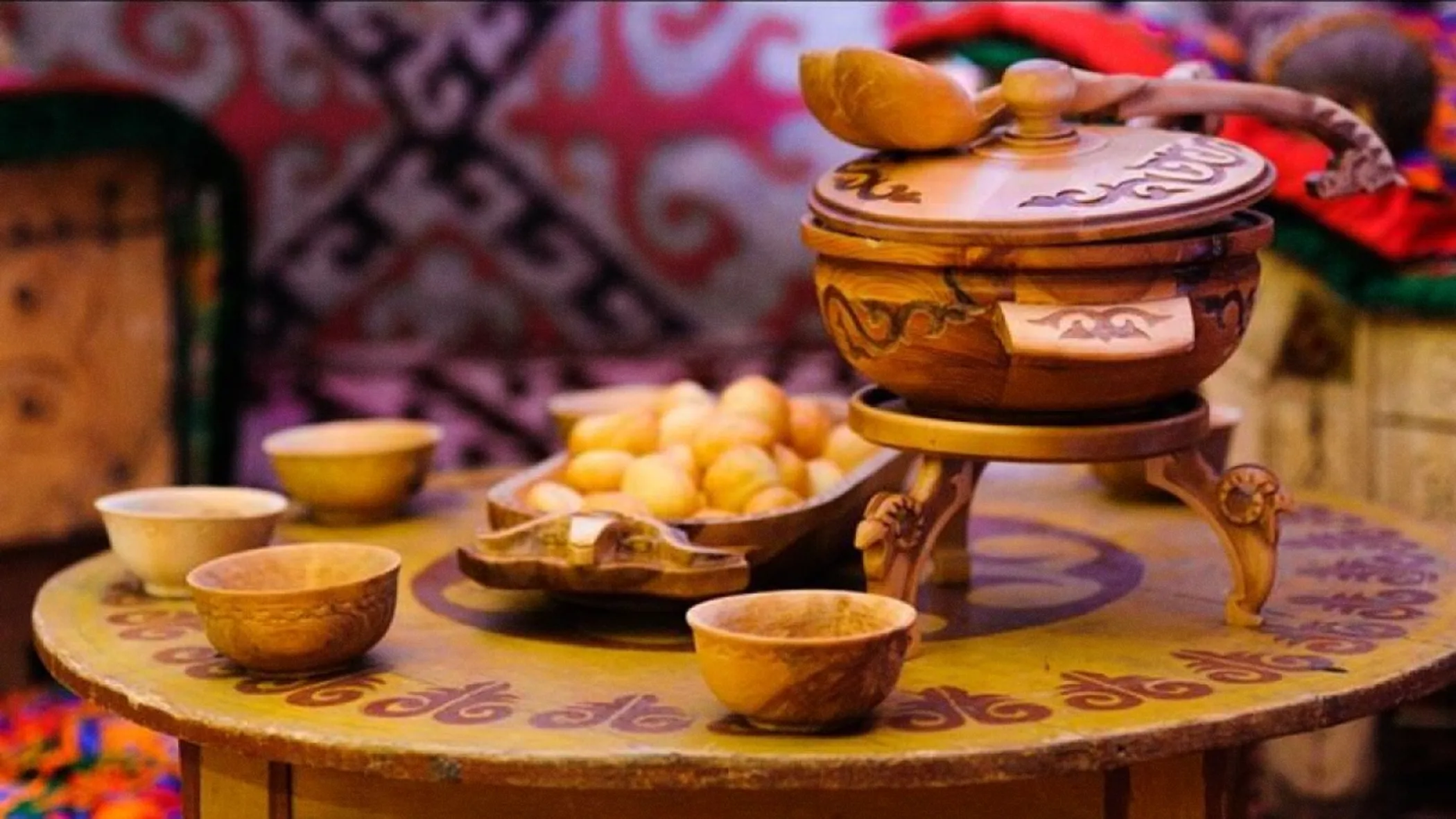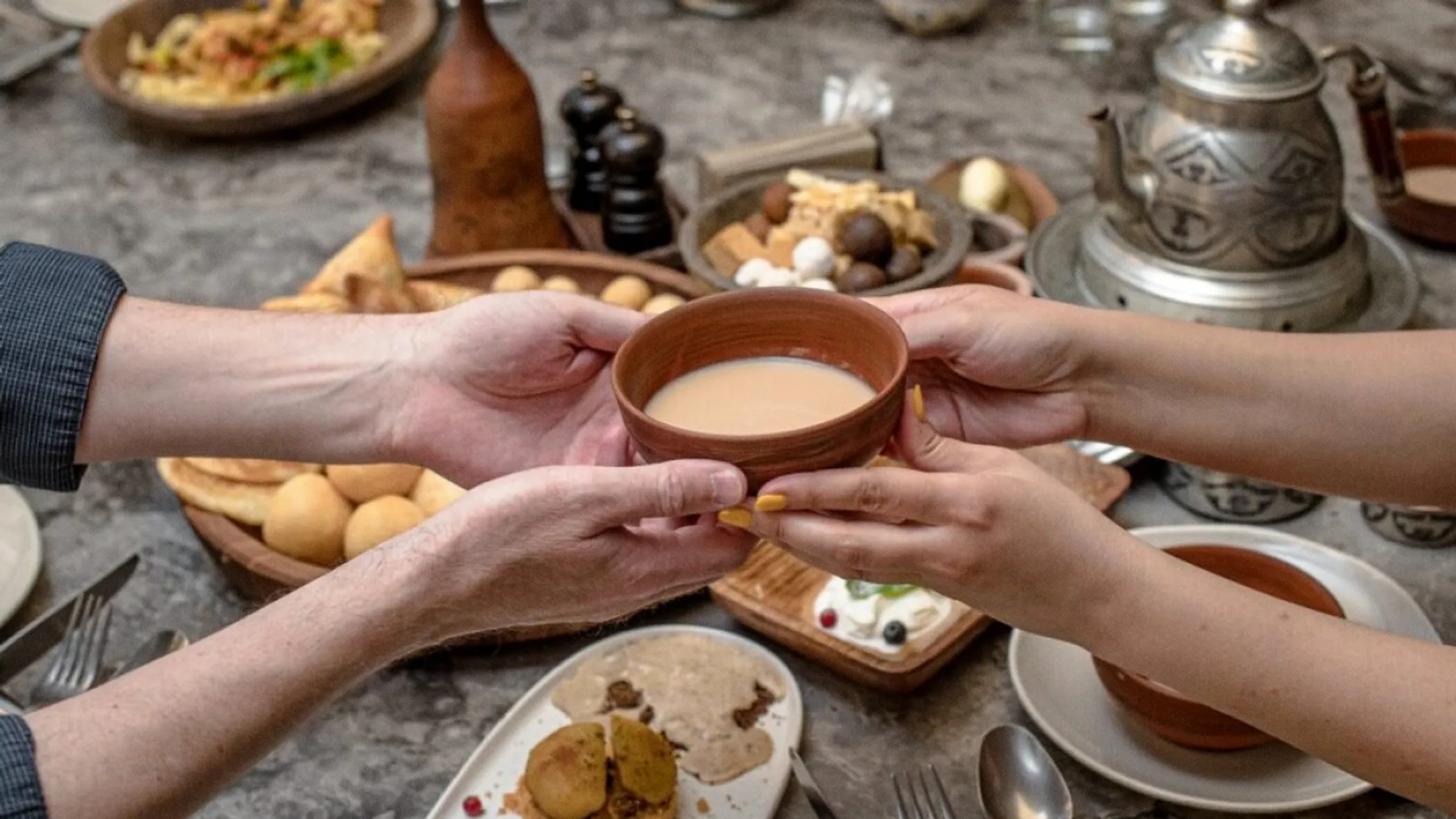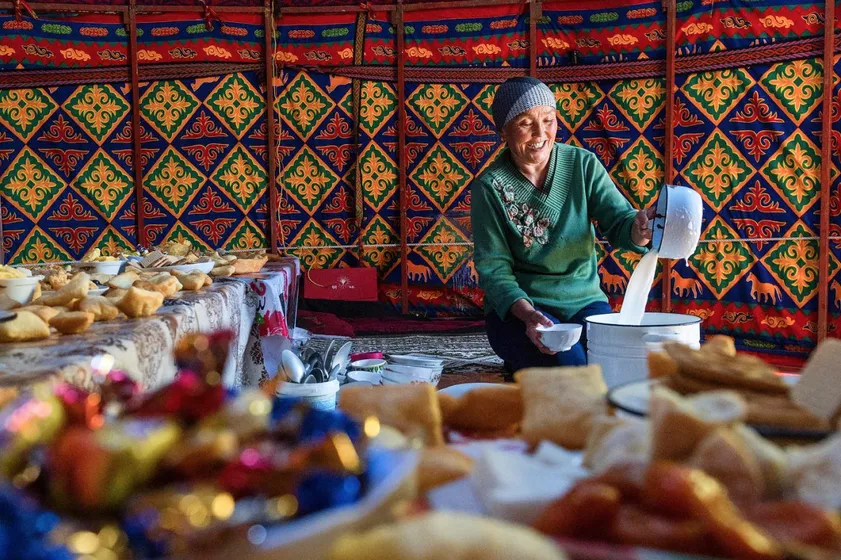The people of Kazakhstan are known for boundless hospitality, as traditions are not just stories but living experiences waiting to be shared. From the art of gift-giving to the culinary marvels of celebratory feasts, each tradition is a doorway into the soul of the Kazakh way of life.
It would never be possible to cover the immense array of traditions the Kazakhs have, but there are certainly some things every tourist should know, especially if one plans to attend a family party or there is a national holiday coming. So, as the tea kettle sings its song of welcome, take a moment to unlock with QazMonitor the secrets of a nation that cherishes its traditions as much as it welcomes others to enjoy them.
Gift-giving culture

Let’s start this 101 with a bit of insight into gifts and the gift-giving vibe in Kazakhstan, as there are a couple of things deeply rooted within the salad bowl that we call our country.
Firstly, there’s a custom called "korimdik." It’s a tradition of presenting a person with a gift to congratulate them on something. And by something, we mean anything—from buying a house and graduating from school to having a baby. So, it’s a broad practice usually maintained by close ones—relatives and friends—but on some occasions, it can also involve gifts from neighbors who live on the same floor.
The tradition doesn’t prescribe a set amount of money; instead, each person gives a gift based on their financial situation, as the most important thing here is to express sincere feelings and the joy of good news.
And, speaking of good news, people in Kazakhstan have a custom for that as well. When a messenger shows up, they can exclaim "Suinshi!" and the crowd can take a sigh of relief, as it means that the news is good. Meaning ‘rejoice,’ bringers of suinshi—and that could be literally anyone—would be given a gift for sharing the good news.
Naturally, there are also some quirks to receiving gifts as well. So, when a guest shows up at your place, don’t be surprised if they bring gifts for you. Speaking of serious events like weddings and such, accompanying these there’s another custom called "sarkyt." After the main event is done and all the guests are preparing to take their leave, the host would prepare ‘treat bags’ for their guests to give out as a parting gift of sorts. Comprised of anything that’s been left on the table, a sarkyt could contain baursaks that somehow survived till the end, a piece of cake, a variety of salads, or especially candies (not those that you brought to the event as gostincy, mind you!). The possibilities and combinations here are truly endless, and one wouldn’t be able to exhaust them all.
Food in Kazakh Celebrations

Food takes center stage in Kazakh celebrations, adding flavor to the festivities. This is particularly evident during Nauryz, a grand holiday heralding the new year. Families commemorate this occasion by arranging a ‘dastarkhan’ - a table adorned with traditional dishes.
At the heart of Nauryz is the enchanting number 7, which is sacred to the Kazakhs. Elders receive Nayryz-kozhe, a special drink crafted from seven fundamental components: meat, water, salt, oil, milk, grains, and flour, symbolizing abundance, health, luck, and happiness.
In Nauryz kozhe preparation, water, symbolizing life, takes precedence. Meat, whether fresh or dried, holds a crucial role, often complemented by homemade horse meat sausages (kazy shuzhyk). The inclusion of various cereals signifies a new beginning, with types like pearl barley, rice, millet, buckwheat, and peas tailored to regional preferences. Dairy products like kurt, milk, sour cream, or ayran complete the dish.
Even within one region, Nauryz kozhe recipes may vary based on family preferences and ingredient availability. Nevertheless, the fundamental ingredients remain constant, resulting in a rich and hearty soup.
Another significant celebration is Kurban Ait, marking the conclusion of Hajj - the pilgrimage to Mecca. On this day, Muslims sacrifice livestock, distributing one-third of the meat to the needy and another third to families or neighbors in need. The sacrificial animals range from sheep, goats, and cows to camels or bulls, with specific criteria for age and health.
In the culinary traditions of Kurban Ait, Kazakh people create various dishes using the meat from sacrificed animals, skillfully capturing the rich, savory essence. During the celebration, the focus is not only on the act of sacrifice but also on the communal joy that arises from sharing the fruits of this sacred tradition. As Kazakh people gather around tables laden with specially prepared dishes, they partake in a celebration that is both heartfelt and delicious, connecting them in a shared feast of gratitude and abundance.
One more unique culinary tradition that exists in Kazakhstan is "zheti shelpek," where people bake round-shaped flatbread every Friday. Stacked on top of each other, the seven flatbreads symbolize the seven layers of the sky or seven heavens. This practice serves as a means for Kazakhs to honor their ancestors up to the seventh generation.
Beyond nourishment, this culinary tradition provides a profound connection to heritage and spirituality. The essence of this ritual lies in not only offering aroma to departed souls but also expressing gratitude to the ancestors through prayers.
Tea ceremony

Quoting the great Kazakh poet Abai Kunanbaiuly, "If a cup of hot drink only burns the body, it means you were drinking water. Because tea warms the soul."
For Kazakhs, drinking tea is more than a beverage choice; it is an opportunity for heart-to-heart conversations, relaxation, and informal socializing.
There are common tea-drinking customs, such as guests are not allowed to pour their own tea, emphasizing the significance of hospitality. Traditionally, it is considered respectful not to fill the cup to the brim. Less tea in the cup signals more respect, indicating that you are not hurrying guests, but instead encouraging them to stay longer. When passing tea cups, the use of the right hand is a key etiquette.
Politeness is further demonstrated by avoiding drinking tea to the last drop, with a preference for fresh-brewed tea in handleless cups known as "piala." Tea is often accompanied by dried dairy products like kurt - dried salted cheese, irimshik - sweet cheese, and bauyrsaks - bread.
The brewing process involves not just pouring boiling water over the tea but letting it simmer or steam. In Western Kazakhstan, the tea kettle is not removed from the fire throughout the tea-drinking session.
Tea-drinking traditions found prominence by adding a status element to the ritual, shaping societal interactions, and contributing health benefits to the nomadic diet. As a result, tea-drinking culture has become an integral part of Kazakh heritage.










